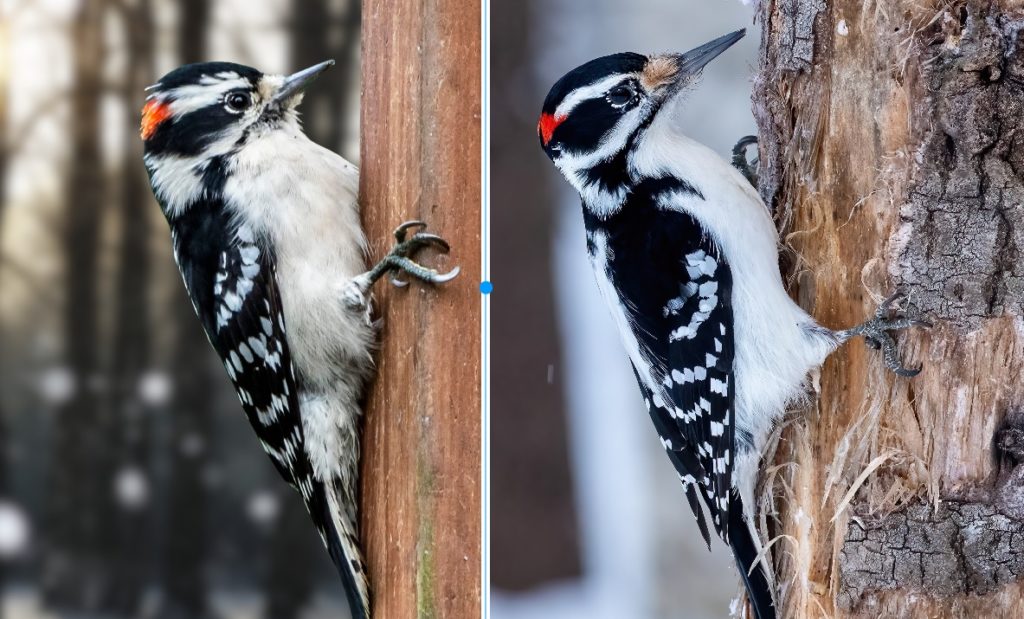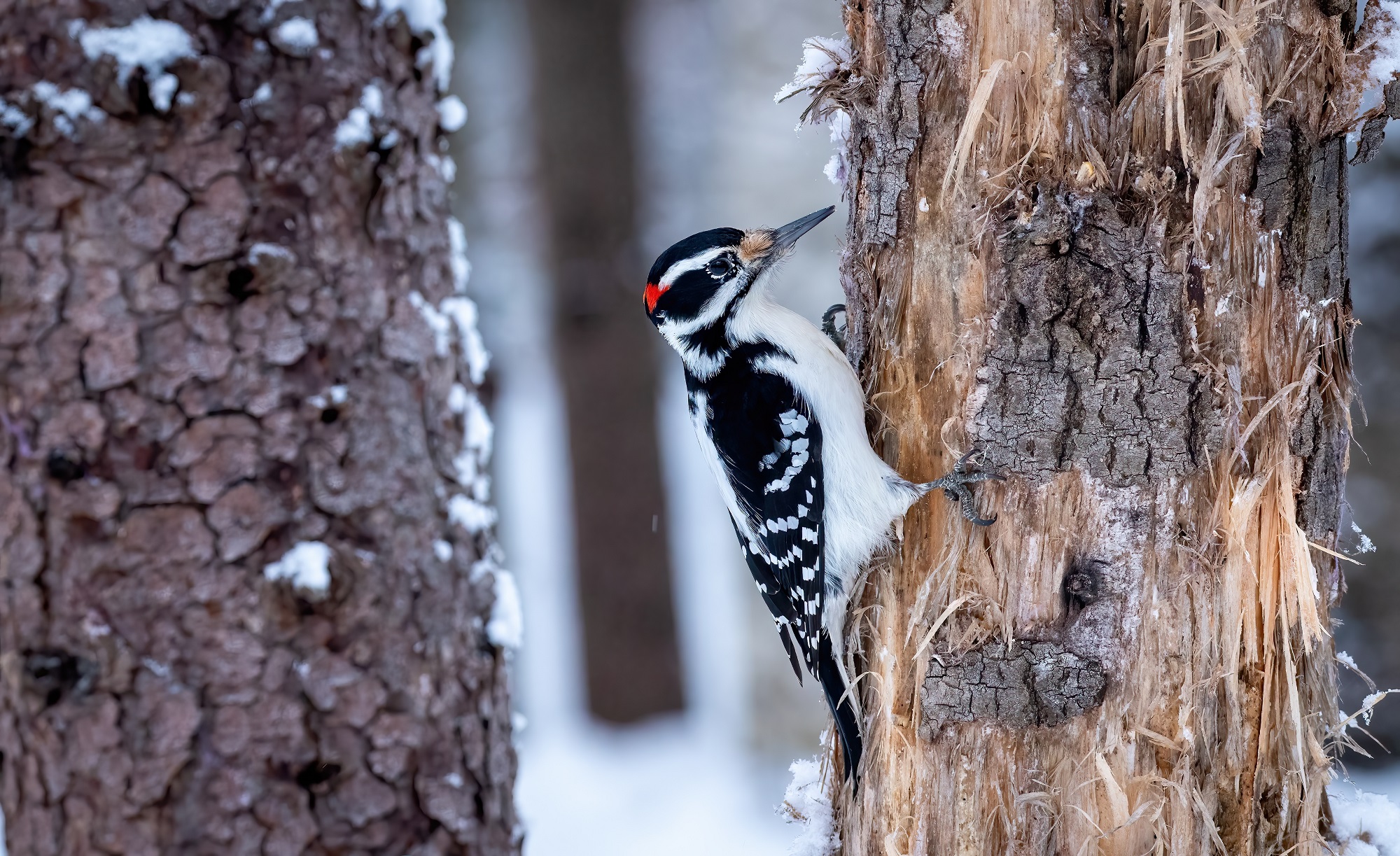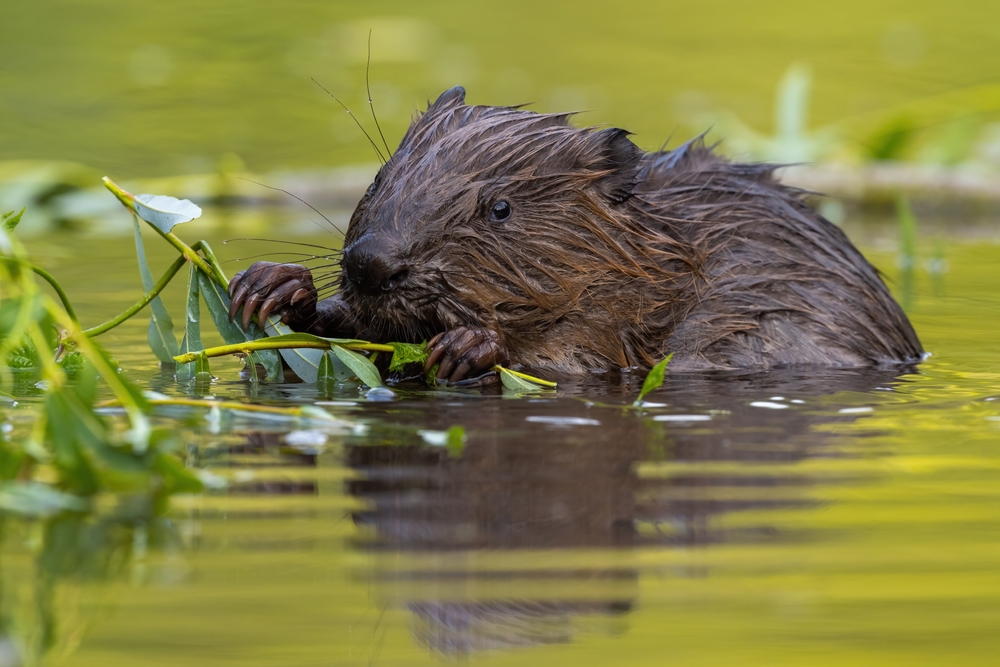In nature, some animals look similar despite not being closely related. There is a reason for this phenomenon. Mimicry, appearing similar to another species, has particular advantages. Safety, for example. But it takes time before a species resorts to mimicry. Nine million years, in the case of woodpeckers, a study conducted by Jente Ottenburghs shows.
Ottenburghs studies the sexual reproduction between birds of different species. He discovered several errors in a standard book on the subject. ‘Examples of hybrids (a hybrid is a young animal that has sprung from parents who are not of the same species, ed.) that were incorrect or insufficiently substantiated.’ This sparked his enthusiasm to study woodpeckers, a species that he considers interesting, and he made a list of trustworthy hybrids. But what could it be used for?
Deterring
‘I recalled a blog on mimicry that I once wrote’, he continues. ‘I began to consider the link between the two.’ He delved into the literature on the subject. ‘Much has been published on mimicry in butterflies and frogs. Butterflies use wing patterns, and poison dart frogs use vivid colours to deter predators. Watch it. I wear bright colours. I may be dangerous.’
‘These patterns and colours also serve to attract a mate’, Ottenburghs goes on to explain. ‘And that may lead to conflict. Mimicry and hybridisation do not match. If you are too much alike and cross-breed, your offspring may be infertile or even die. Hybridisation hence thwarts mimicry.’
Mimicry and hybridisation do not match
Jente Ottenburghs, Wildlife Ecology & Conservation
Mimicry occurs relatively frequently among woodpeckers. Ottenburghs finest examples are those of the hairy woodpecker and the downy woodpecker, two American species that are very similar but belong to entirely different genera. Although the birds are different in size, this is not visible from a distance. This similarity offers the smaller downy woodpecker protection from the larger hairy woodpecker.

Ottenburghs’ hypothesis was that species will only start mimicking each other when cross-breeding is no longer an option. ‘Hybridisation thwarts mimicry. Only when the chances of successful cross-breeding have been reduced to zero does mimicry start.’ This idea formed his point of departure. He investigated which types of woodpeckers hybridise and which mimic and how these species are related in an evolutionary sense.
He received unexpected support in his quest. Birds must live in the same region in order to cross-breed. What is an easy way to find this out? Ottenburghs: ‘A calculation of the possible combinations of 240 different woodpecker species is an option, but would take a very long time.’ A post on X helped. Belgian biologist Michaël Nicolaï responded.
Almost too good to be true
Nicolaï studies the evolution of colour in birds and has a computer script available that could help Ottenburghs solve the issue. ‘One week later, I had my list of woodpeckers who inhabited the same region but did not cross-breed. That was my control group.’ The calculations he did afterwards yielded unequivocal results. Ottenburghs’ hypothesis was supported. ‘Almost too good to be true.’
Everything was arranged by email, without so much as a Teams meeting
Jente Ottenburghs, Wildlife Ecology & Conservation
‘Nine million years after a species merges, the chance of successfully cross-breeding is zero. That is when mimicry emerges’, says Ottenburghs. ‘It is a very clear pivotal point, and that point is fairly late. The oldest woodpecker species in my dataset is 23 million years old, so this turning point is almost halfway.’ Why the turning point is at nine million years is unclear, as is the question of whether other bird species have a similarly clear pivotal point.
Never met
Ottenburghs and Nicolaï co-authored a publication in the Journal of Avian Biology. They have never met. Ottenburghs: ‘Everything was arranged by email, without so much as a Teams meeting. I knew him from X, we follow each other, and I know what he looks like from a picture. And now this publication. Quite funny.’

 The hairy woodpecker has a slightly smaller lookalike. Photo Shutterstock
The hairy woodpecker has a slightly smaller lookalike. Photo Shutterstock 

